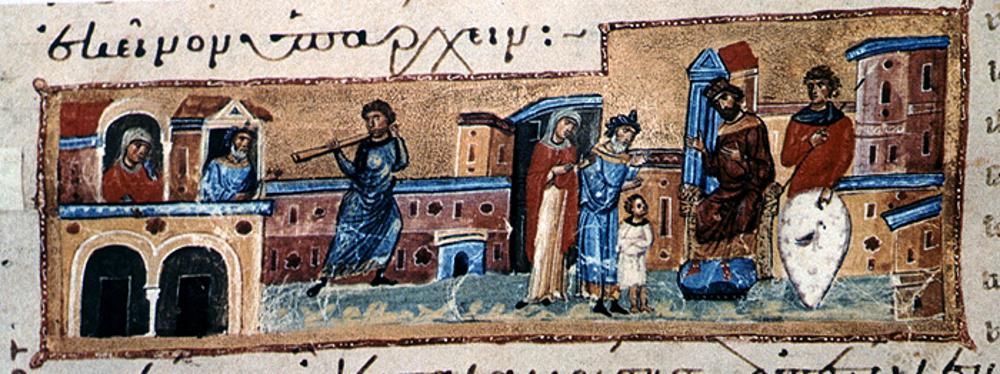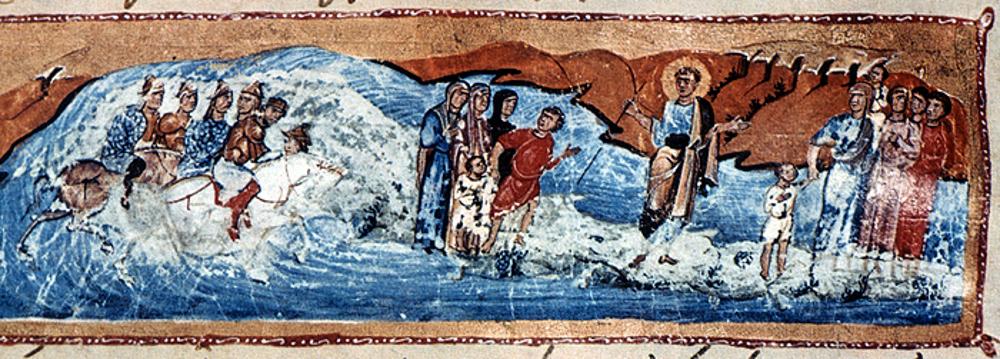Try Amazon Audible Premium Plus and Get Up to Two Free Audiobooks

Join Amazon Prime - Watch Thousands of Movies & TV Shows Anytime - Start Free Trial Now
Barlaam and Ioasaph
The Holy Monastery of Iveron, Mount Athos, Greece, Codex. 463
Folio 22r

Folio 22v

Folio 26v: Moses, crossing the Red Sea

Folio 39r: The Man with three friends

Pictures Source: Mount Athos, Treasures, II (1975), pp. 306-322; colour figs. 53-132; from The Gabriel Millet Collection
More folios from Barlaam and Ioasaph. The Holy Monastery of Iveron, Mount Athos, Byzantine Greece, Codex. 463
The 2 armoured soldiers in folio 39r are referenced as figure 232 in The military technology of classical Islam by D Nicolle
232. Manuscript, "The Man with three friends," Barlaam and Joasaph, late 12th-early 13th centuries AD, Byzantine, Iviron Monastery Lib., Ms. 463, f. 39, Mount Athos (Ners B).
pp.446-447, Vol. 2:
Saljūq influence did not, however, mean a revival of horse-archers in Byzantine armies, except for those provided by Turkish mercenary or allied corps. By contrast there was, in fact, an emphasis on lance-armed cavalry of rather European, almost Frankish, style. This perhaps reflected a loss of the Empire's main Anatolian recruiting grounds and the necessity of relying on the only type of cavalry now available to combat the various threats facing Byzantium.17 Most frontier regions, east and west, were for a variety of reasons heavily depopulated in the 12th century. The depression of much of the free peasantry into servitude also hindered internal recruitment and all those reasons conspired
17. Chalandon, Les Comnčnes, Études sur l’Empire Byzantin, vo1. II, p. 237.
to force large numbers of foreign mercenary troops upon Byzantium.18 Cavalry, mercenary or indigenous, seem to have been divided into light and heavy, the former perhaps being horse-archers of Turcoman or Pecheneg origin. The latter certainly rode larger Arab or Hungarian horses, wore mail hauberks, helmets laced to coifs, and fought with lances, maces and swords while carrying large kite-shaped shields.19 Various 12th and 13th century illustrations from Byzantium and culturally related peripheral areas such as Bulgaria, Cyprus, Serbia and the Crusader states, show the development of a heavy cavalry whose equipment was akin to, though distinct from, that of western Europe (Figs.
226, 227, 229, 231, 232, 236, 271, 275 and 634).
18. Ibid., vo1. II, pp. 611-618.
19. Ibid., vo1. II, pp. 619-620.
Back to the early folios of Barlaam and Ioasaph. The Holy Monastery of Iveron, Mount Athos, Byzantine Greece, Codex. 463





